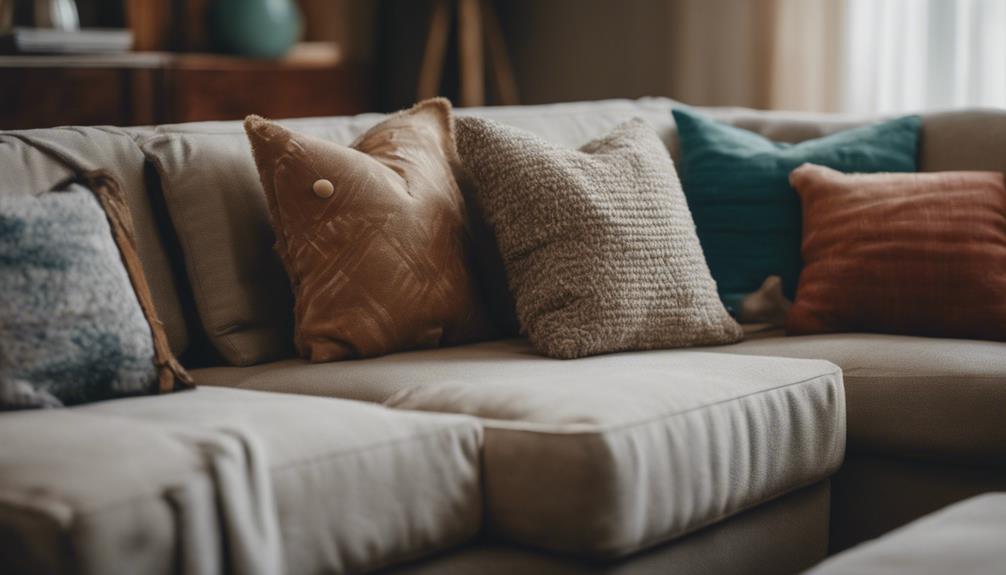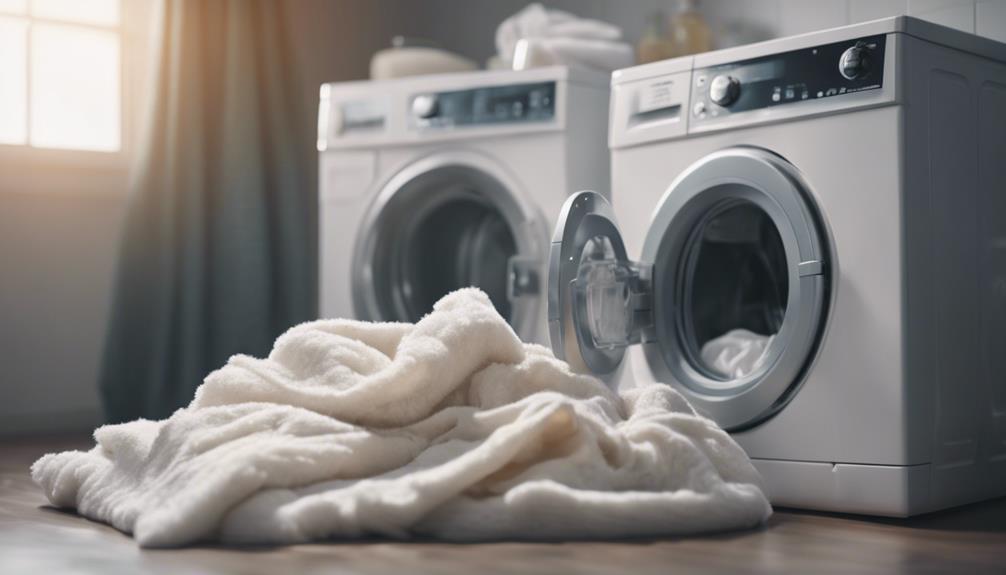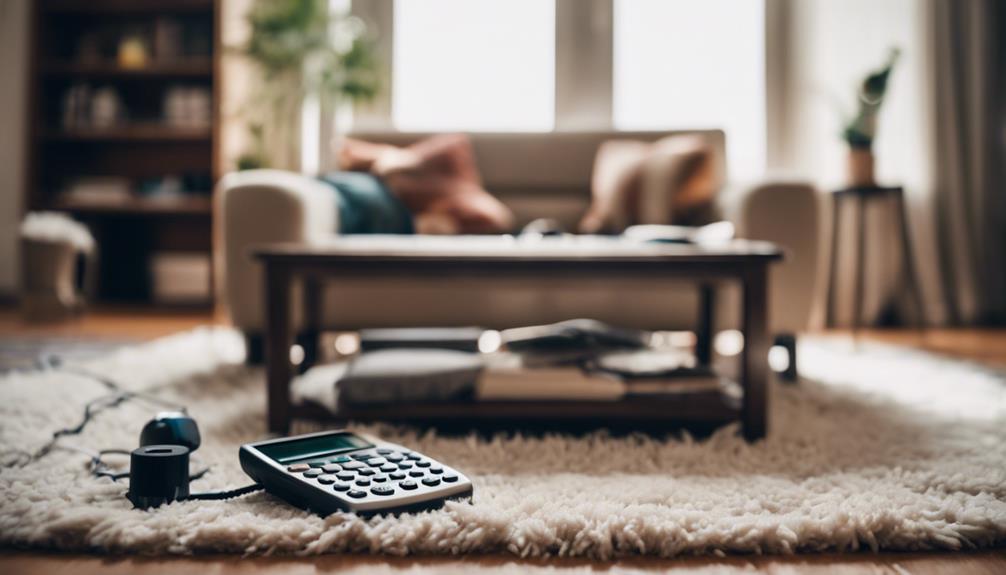Throw pillows usually need to be replaced every 2 years for cleanliness and comfort. Over time, they collect dust, oils, and allergens which can affect their freshness and support. Signs such as flatness, lumps, or odors indicate that it is time for a replacement. Different types of pillows, such as feather or memory foam, have varying lifespans and care requirements. Regular cleaning can help prolong their durability, ultimately contributing to a cleaner living environment. By staying proactive about pillow maintenance, you can ensure they remain comfortable and fresh. To learn more about pillow care and replacement schedules, discover how to keep your throw pillows in excellent condition.
Key Takeaways
- Replace throw pillows every 2 years for hygiene.
- Signs like flatness, lumps, or odors indicate replacement.
- Regular cleaning and rotation maintain pillow quality.
- Wash pillows monthly with mild detergent for freshness.
- Store pillows in a cool, dry place when not in use.
Importance of Regular Pillow Replacement
Regularly swapping out throw pillows is crucial for maintaining a clean and healthy living environment. When it comes to pillows, both latex and memory foam options require attention. These pillows can harbor dust mites, allergens, and sweat over time, impacting sleep quality. To guarantee maximum hygiene, it's advisable to replace these pillows at least every two years.
By doing so, you can prevent the accumulation of body oils, pet dander, and dust that lead to odors, stains, and potential skin issues. Additionally, old pillows tend to lose their shape and support, causing discomfort and affecting posture while sitting or lounging. By replacing these pillows every two years, you can uphold a fresh and hygienic living space.
This simple practice not only promotes better sleep but also enhances the overall aesthetics and cleanliness of your home decor. Remember, regular pillow replacement is crucial for a healthier and more comfortable living environment.
Signs Your Pillows Need Replacing
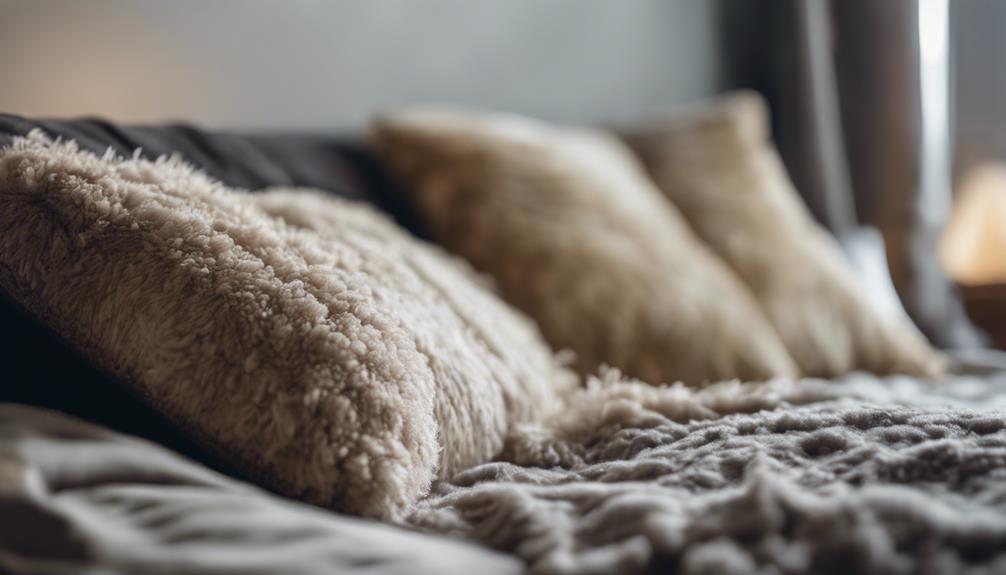
Swapping out throw pillows every two years is important for maintaining a clean and healthy living environment. Signs that your pillows may need replacing include flat or lumpy shapes, indicating a loss of support and comfort. Misshapen pillows might no longer provide the intended aesthetic appeal. Uncomfortable pillows can lead to poor posture and discomfort while sitting or lounging.
Smelly pillows may harbor bacterial growth and accumulate body oils, affecting hygiene. Yellowed or heavily stained pillows suggest a need for replacement due to hygiene concerns. Feather pillows, especially without a pillow protector, can attract dust mites over time, worsening allergies and causing respiratory issues.
Regularly inspecting your pillows for these signs can help ensure a fresh and comfortable living space. Remember, it's important to replace pillows not just for a better look but also for your health and well-being.
When to Replace Feather Pillows
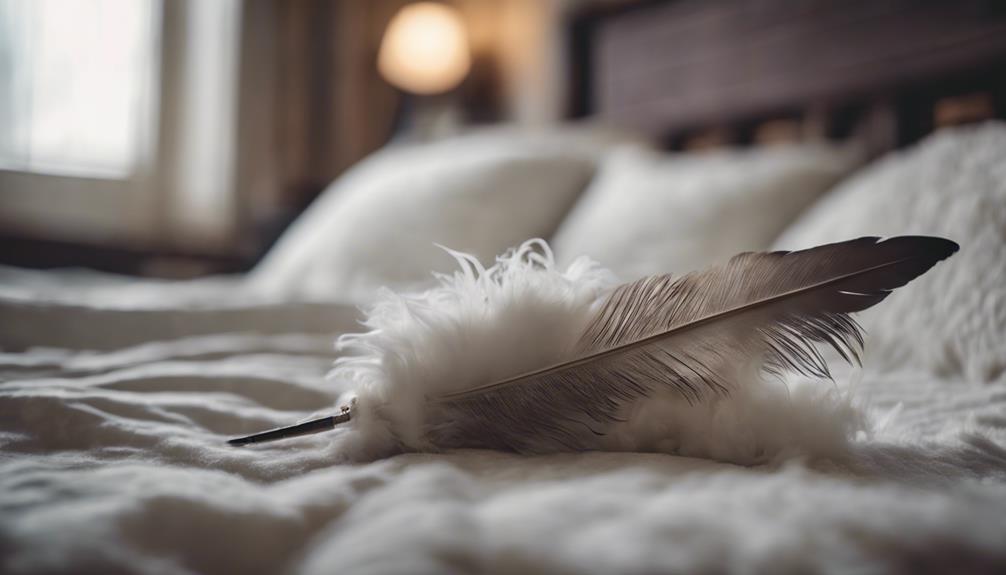
Feather pillows typically need replacement after around 3 years of use, especially when showing signs of flatness, lumps, or a loss of support. When your once plump feather pillow starts to feel deflated or you notice clumping inside, it's a clear indicator that it's time to replace it.
Over time, feather pillows can lose their shape and support, leading to discomfort during sleep. To prolong the lifespan of your feather pillows, consider using a pillow protector to shield them from dust, oils, and spills. Additionally, washing your feather pillows twice a year and regularly fluffing them can help maintain their loft and extend their usability.
When to Replace Down-Alternative Pillows
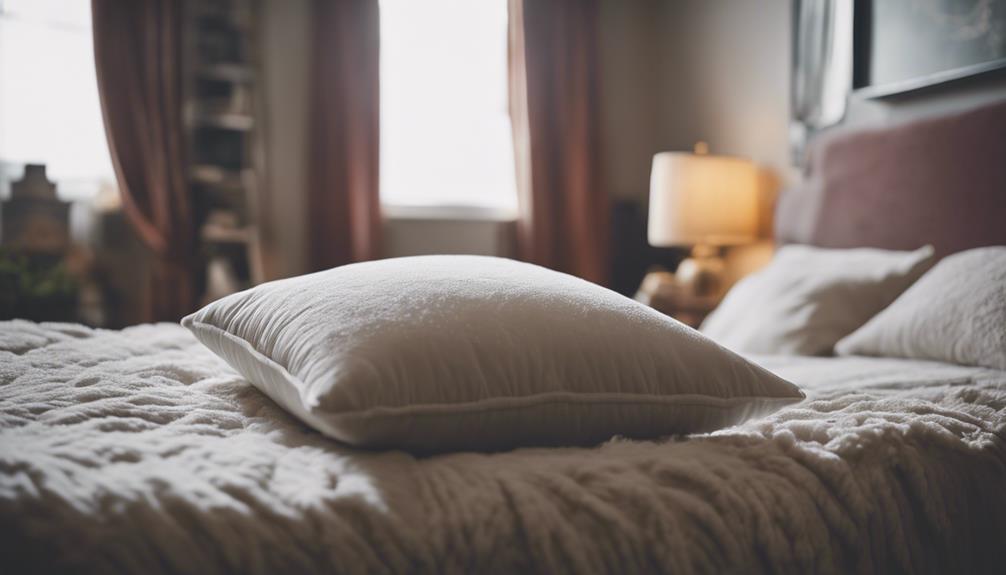
After approximately one year of use, down-alternative pillows should be replaced to maintain peak comfort and support. Regular use can cause down-alternative pillows to lose their shape, become flat, and offer reduced cushioning, indicating the need for replacement.
While fluffing and rotating the pillows can help prolong their lifespan, it's still recommended to replace your pillows every 1-2 years for hygiene and comfort reasons. Over time, down-alternative pillows can accumulate body oils, sweat, and allergens, diminishing their effectiveness and cleanliness.
Even high-quality down-alternative pillows will eventually need to be replaced to make sure that you're getting the best sleep experience. By adhering to a regular replacement schedule, you can maintain a healthy sleeping environment and ensure that your pillows continue to provide the necessary support for a restful night's sleep.
When to Replace Memory Foam Pillows
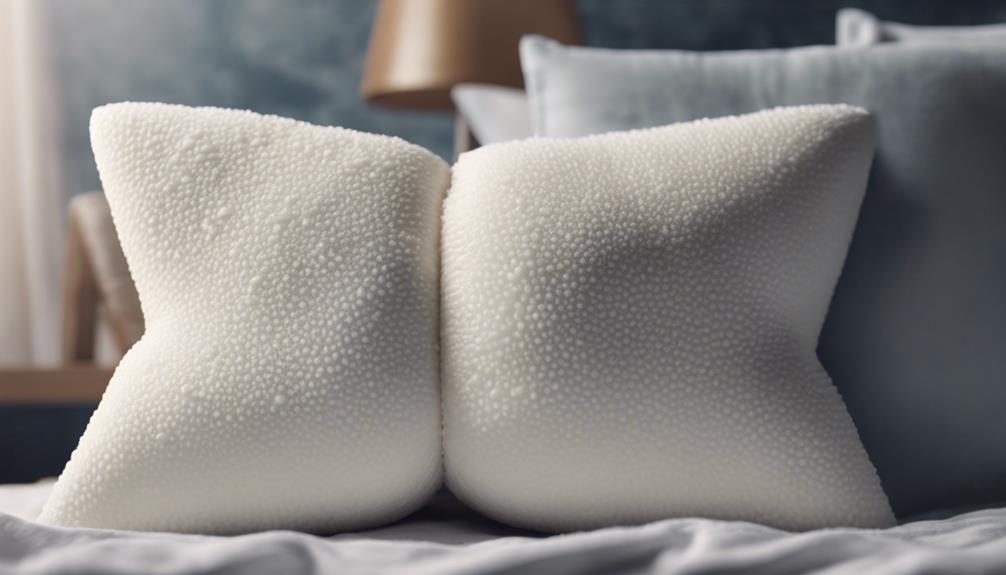
Memory foam pillows should be replaced every 2-3 years to guarantee excellent support and hygiene. Signs that it's time to replace them include losing shape, lumps forming, or discomfort during use.
Regular replacement helps maintain proper head and neck support for better sleep quality.
Pillow Lifespan Duration
To maintain ideal support and comfort, it's advisable to replace memory foam pillows every 2-3 years. Over time, memory foam pillows lose their original firmness, leading to decreased support for the head and neck.
When considering replacing your pillows, watch for visible lumps, sagging, or a loss of shape, indicating they may no longer provide adequate support. Regularly rotating and flipping memory foam pillows can help extend their lifespan, preventing premature wear.
Proper care, like spot cleaning and airing them out, also contributes to prolonging the longevity of memory foam pillows. By replacing your pillows every 2-3 years and being attentive to signs of wear, you can be confident you always have a supportive and comfortable sleep experience.
Signs of Wear
When memory foam pillows display visible lumps, indentations, or a loss of shape, it's time to consider replacing them to guarantee ongoing support and comfort. Memory foam pillows should be replaced every 2-3 years to maintain their effectiveness.
If your memory foam pillow no longer rebounds or regains its shape after use, it's a clear sign of wear and a signal that it needs replacing. Additionally, consider getting a new memory foam pillow if you experience neck or shoulder pain during sleep, as this could indicate that the pillow is no longer providing adequate support.
Keeping an eye out for these signs of wear can help ensure that your memory foam pillow continues to offer the comfort and support you need for a good night's rest.
Hygiene Considerations
Regularly inspecting memory foam pillows for signs of wear and tear can help determine the appropriate time for replacement. Memory foam pillows should typically be replaced every 2-3 years to maintain ideal hygiene and support levels.
Sweat, body oils, and allergens can accumulate within the pillow over time, affecting sleep quality and potentially causing allergies or skin irritations. It's essential to replace memory foam pillows when they lose their shape, feel lumpy, or emit unpleasant odors.
Using pillow protectors can help extend the lifespan of memory foam pillows by providing an additional barrier against moisture and allergens. By prioritizing hygiene considerations and replacing memory foam pillows at the recommended intervals, individuals can guarantee a cleaner and healthier sleep environment.
When to Replace Microbead/Gel Pillows
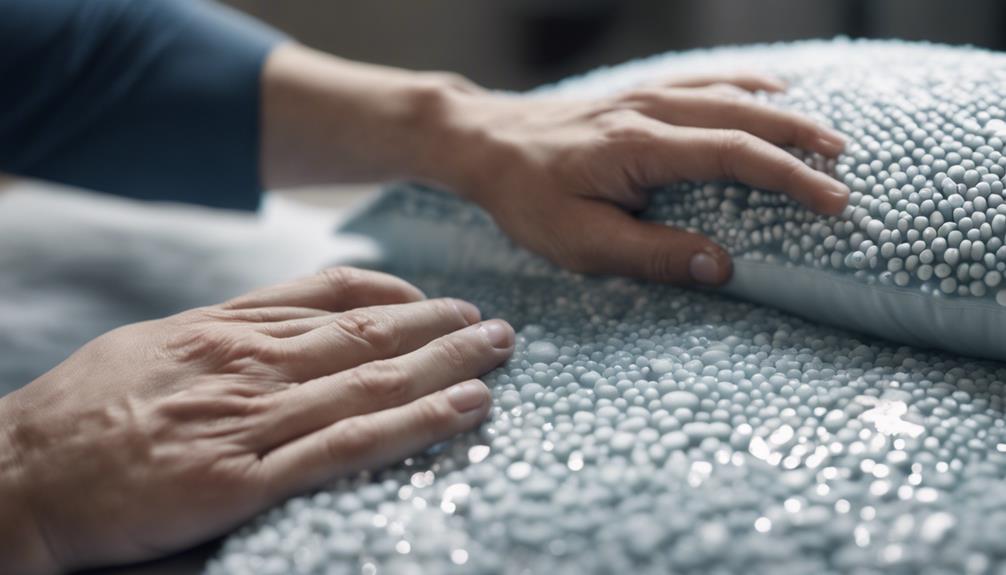
For ideal support and comfort, it is recommended to replace microbead and gel pillows every 2 years. Over time, these pillows can lose their shape and firmness, impacting their ability to provide adequate support for your neck and head during sleep. Regular use and compression can lead to the pillows becoming lumpy or uneven, further compromising their performance. By replacing microbead and gel pillows every two years, you guarantee that you maintain peak sleep quality and comfort.
| When to Replace Microbead/Gel Pillows | |
|---|---|
| Recommendation | Replace every 2 years |
| Reasons | Maintain support and comfort |
| Effects of Delay | Loss of shape and firmness |
| Impact on Sleep | Reduced neck and head support |
Regularly replacing your microbead and gel pillows is essential to ensure that you continue to enjoy a restful night's sleep.
Pillow Care and Maintenance Tips
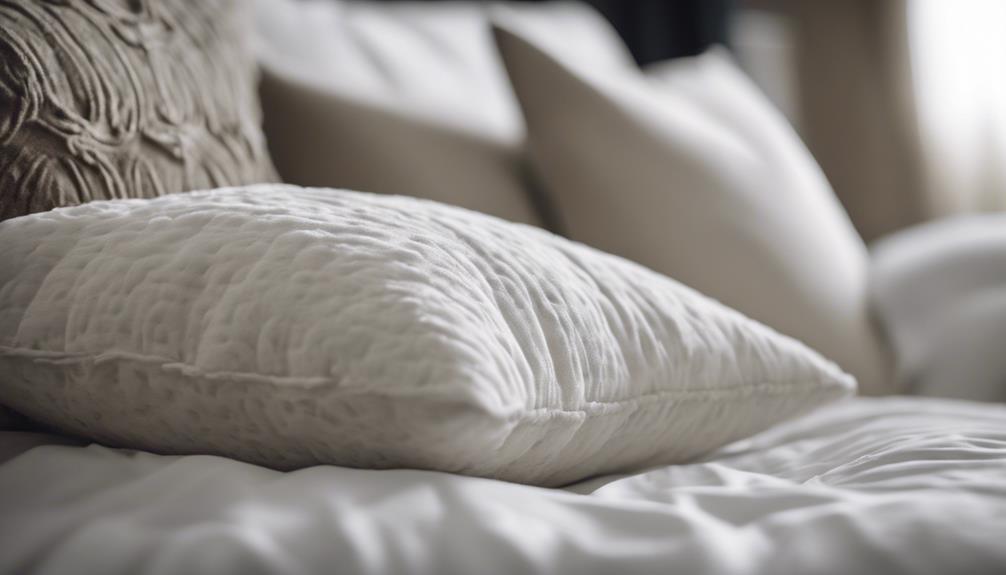
To guarantee the longevity and cleanliness of your throw pillows, it's crucial to follow proper care and maintenance tips. Here are some essential guidelines to keep your throw pillows in top condition:
- Wash throw pillow covers every 2-4 weeks: Regular washing helps maintain cleanliness and reduces allergens that can accumulate on the fabric.
- Clean the filling of throw pillows every other month: Prevent dirt and dust buildup by giving the filling some attention on a routine basis.
- Clean the entire throw pillow monthly if the cover isn't removable: For throw pillows without removable covers, ensure hygiene by cleaning the entire pillow regularly.
Remember to use cold-to-warm water for washing pillow covers on a gentle cycle, adjusting based on color brightness. When drying, opt for low-to-medium heat and fluff the pillows occasionally to maintain their shape and prevent shrinkage.
Proper care guarantees that your throw pillows not only look good but also contribute to a healthy and clean living environment.
Frequently Asked Questions
How Often Should I Throw Out Pillows?
We typically recommend replacing throw pillows every 1 to 2 years for hygiene and support. However, it's important to keep in mind replacing them sooner if they lose shape, become flat, or feel uncomfortable.
Regularly washing removable covers every 2-4 weeks can help extend the pillows' lifespan. It's also vital to wash the filling every other month to get rid of dust, allergens, and odors.
If the covers aren't removable, clean the entire pillow monthly to prevent dirt and bacteria buildup.
When Should You Throw Out Throw Pillows?
When to throw out throw pillows depends on their condition. If they're flat, lumpy, or smelly, it's time for a change. Replace them every 1-2 years for cleanliness and support.
If the covers are non-removable, clean the whole pillow monthly. Regularly check for wear and tear.
We keep comfort and hygiene in check by being vigilant about our throw pillows' condition.
Should I Throw My Pillows Away?
We should throw away pillows that are flat, lumpy, emit odors, or have stubborn stains. If cleaning doesn't refresh heavily soiled pillows, it's time to discard them.
Old pillows that are uncomfortable or no longer supportive should be replaced. Regularly check throw pillows for wear and tear, and replace those that don't offer the intended comfort.
Prioritize sleep hygiene by ensuring pillows are in good condition for best rest.
How Many Throw Pillows Can You Wash at Once?
We can typically wash 2-4 throw pillows at once in a standard washing machine. Overcrowding the machine might hinder thorough cleaning. It's important to follow the recommended amount to guarantee even cleaning and prevent damage.
Checking care instructions on the pillows is essential to determine the best washing method and maximum number for washing. Washing a moderate number allows for proper agitation, enhancing cleaning efficiency for fresh and clean pillows.
Is it Necessary to Replace Throw Pillows Regularly?
Throw pillows can accumulate dust, dirt, and allergens over time. Therefore, disposing old pillows properly and replacing them regularly is necessary to maintain a clean and healthy living environment. It’s recommended to replace throw pillows every 1-2 years to ensure the freshness and cleanliness of your home.
Conclusion
To wrap up, regularly replacing your throw pillows is essential for maintaining a clean and comfortable sleep environment. By paying attention to signs of wear and tear, you can guarantee that your pillows provide the support and comfort you need.
Remember, a good night's sleep is invaluable, so don't underestimate the impact of a fresh set of pillows. It's time to banish those old, lumpy pillows and treat yourself to a luxurious night of rest!
